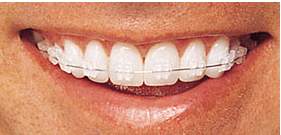Laser Medicine
Laser medicine represents the use of a variety of types of lasers in medical diagnosis, therapy, or treatment. This very important medicinal sector was established in 1993. It provides a wide range of techniques in laser-based treatment of for instance non-surgical treatment of varicose veins or different skin conditions.
Endovenous laser treatment is known as a minimally invasive ultrasound-guided technique which is commonly used for treating varicose veins. By means of this method an optical fiber gets inserted into the vein to be treated and laser light is consequently shone into the interior of the vein. While the vein contracts itself, the optical fiber is carefully withdrawn. In this context it has to be taken into consideration that some minor complications such as pain, infection, hematoma, and edema may occur.
Another operation area of laser medicine is the so-called light therapy. Light therapy, also called ‘phototherapy’, consists of exposure to daylight by means of lasers, fluorescent lamps, light-emitting diodes, and dichroic lamps. Strictly speaking the light is controlled for a certain amount of time and at a very specific time of day. Light therapy which is directed at the skin is basically employed to treat acne vulgaris as well as neonatal jaundice. In some cases light therapy is also used to treat circadian rhythm disorders such as delayed sleep phase syndrome.
Types of lasers that are generally used in medicine include any laser design, especially the following ones:
- fiber lasers (the active gain medium represents a so-called optical fiber)
- dye lasers (an organic dye gets used as the lasing medium),
- diode lasers (the active gain medium is a so-called semiconductor which is very similar to the one found in a light-emitting diode),
- gas lasers (within this laser an electric current gets discharged by means of a gas in order to produce light),
- excimer lasers (this laser gets generally used in eye surgery as well as semiconductor manufacturing).
Exemplary medical areas that use lasers include the following ones:
- dentistry,
- surgery,
- urology,
- angioplasty,
- dermatology,
- mammography,
- microscopy,
- various cosmetic applications (laser hair removal, tattoo removal, …)
 Ceramic brackets are made of composite materials. They are very strong and generally do not stain. Three popular brands are Clarity and Transcend, made by 3M Unitek; and Mystique, made by GAC. Adults like to choose ceramic because they "blend in" with the teeth and are less noticeable than metal. These are the type of braces actor Tom Cruise had.
Ceramic brackets are made of composite materials. They are very strong and generally do not stain. Three popular brands are Clarity and Transcend, made by 3M Unitek; and Mystique, made by GAC. Adults like to choose ceramic because they "blend in" with the teeth and are less noticeable than metal. These are the type of braces actor Tom Cruise had. Inspire brand brackets
Inspire brand brackets Invisalign braces are great for people who do not have severe problems. The "braces" consist of strong plastic trays that are fabricated especially for you. They are indeed invisible. If your bite is not severely off and your teeth are not severely crooked, then Invisalign would be a good choice. You would be able to get your teeth straightened without anyone seeing that you are wearing "braces"! This appeals to many adults, especially people who wore traditional braces as children and then need more treatment later in life. However, if your bite is very bad, if you need extractions or require headgear or other appliances, then Invisalign will not work for you; you will need to wear traditional braces.
Invisalign braces are great for people who do not have severe problems. The "braces" consist of strong plastic trays that are fabricated especially for you. They are indeed invisible. If your bite is not severely off and your teeth are not severely crooked, then Invisalign would be a good choice. You would be able to get your teeth straightened without anyone seeing that you are wearing "braces"! This appeals to many adults, especially people who wore traditional braces as children and then need more treatment later in life. However, if your bite is very bad, if you need extractions or require headgear or other appliances, then Invisalign will not work for you; you will need to wear traditional braces. Lingual braces are placed behind your teeth, and are therefore virtually invisible to other people. Usually, lingual brackets are made of metal.
Lingual braces are placed behind your teeth, and are therefore virtually invisible to other people. Usually, lingual brackets are made of metal.  Metal brackets can be silver or golden. The golden brackets look a bit more "jewelry-like" and are often a popular choice with young women.
Metal brackets can be silver or golden. The golden brackets look a bit more "jewelry-like" and are often a popular choice with young women.